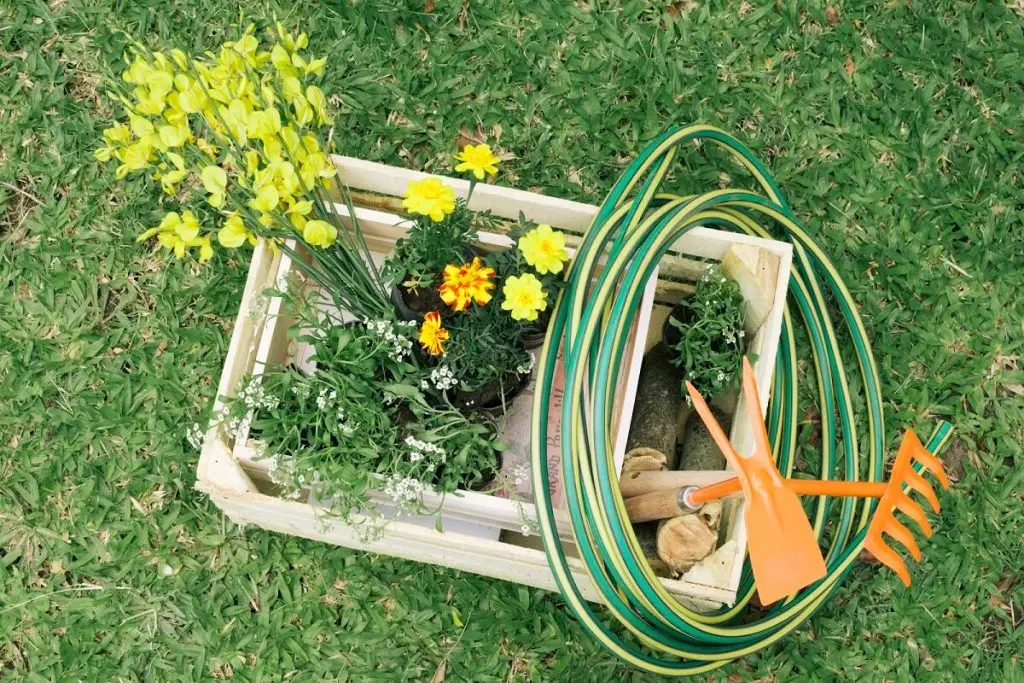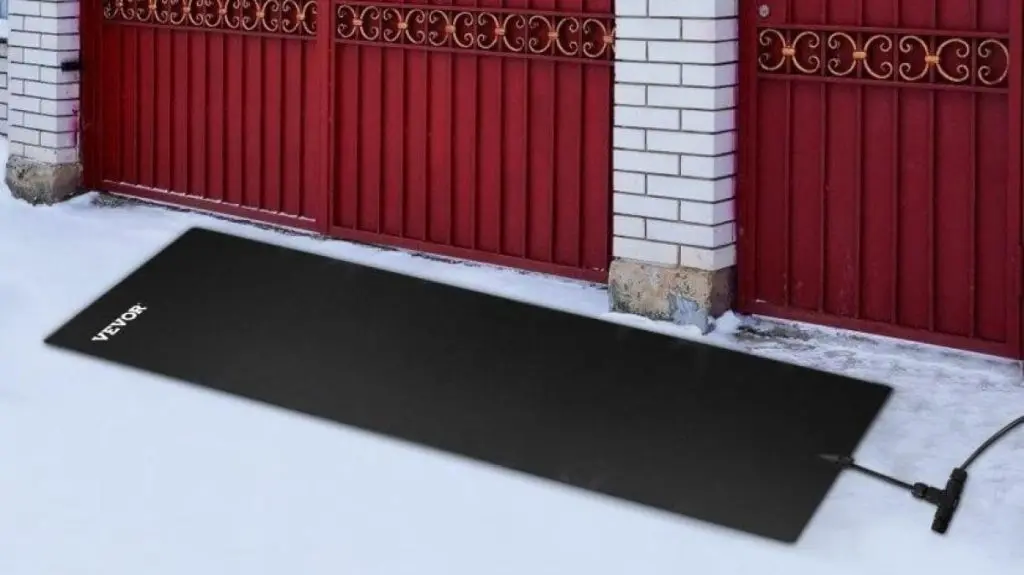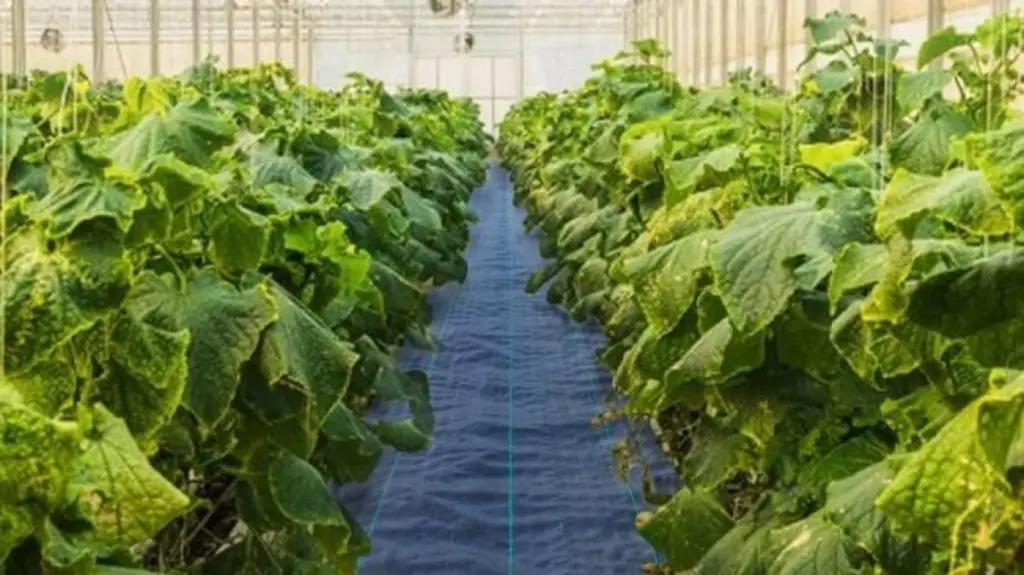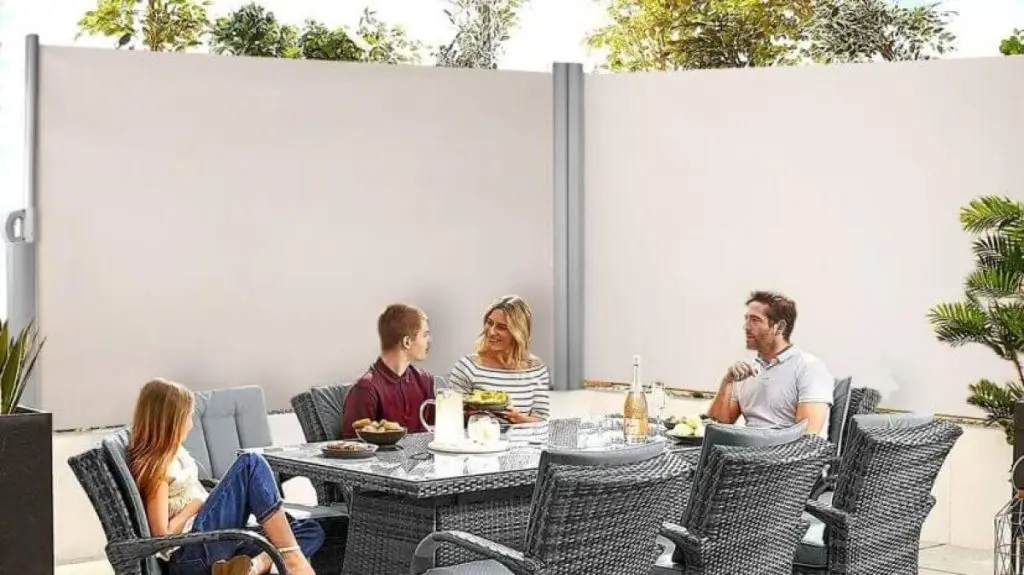Garden hoses, which come in both straight and coiled varieties, are among the most widely used equipment for everyday yard maintenance. They are excellent for cleaning dirty walkways and soaking flower beds to keep your property looking lovely. Many users frequently struggle to decide between the many possibilities depending on the hose width that fits their needs and budget.
We will be carefully examining each of these choices today in an effort to determine which is best for our readers. You can learn everything there is to know about ⅝ and ¾-inch hoses by taking a quick look at our guide. With careful examination, we have prepared a list to compare 5/8 hose vs 3/4 hose. We also have some VEVOR garden hose reel options for your watering solutions.
Table of contents
Understanding Hose Sizes
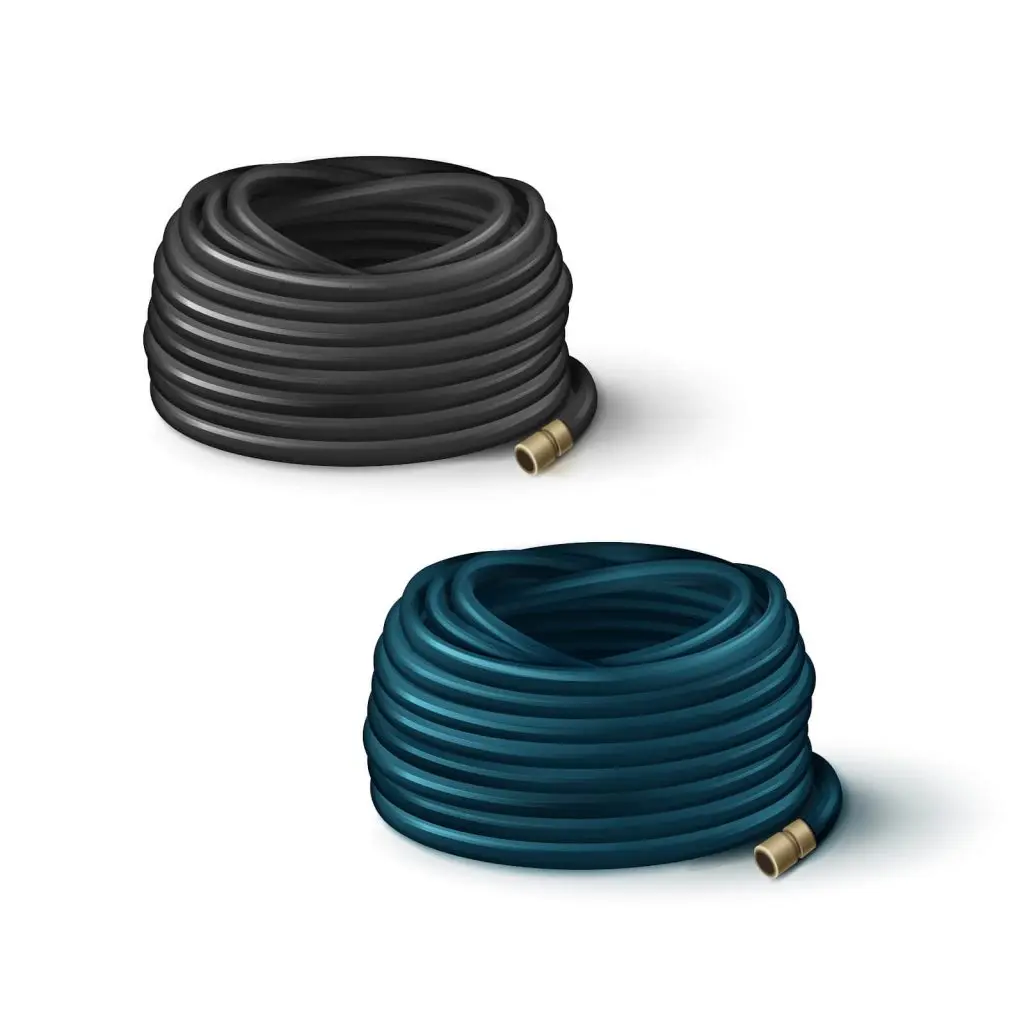
The inner diameter of the hose, meaning the measurement of the straight line separating the two farthest places on the inner surface of the tube, is used to determine hose sizes. Even though they are labeled as metric measurements, almost all hoses manufactured worldwide are made in inch sizes.
What Does 3/4 Inch Hose Mean?
The ¾ -inch water hose is essentially a unique kind of hose that can only be found in stores that specialize in selling heavy-duty gardening equipment. It can hold a very large capacity for total water outflow. So you can quickly water a large area with a ¾ inch water hose.
Comparatively speaking, an ¾ inch hose is more durable since it has a bigger cross-section and therefore uses more material. However, it also increases the hose’s weight and makes it more difficult to maneuver.
What Does 5/8 Inch Hose Mean?
The most widely accessible water hose on the market is the ⅝ inch model, which is readily available at any supermarket or gardening supply store. The name “⅝ inch” comes from the internal diameter of the hoses, which is almost ⅝ inches. Although these hoses are well-liked in the market, they lack the power of their competitor by a considerable margin.
The ⅝ inches cross-sectional area increases water velocity at a fixed discharge rate, but at the expense of a lower water pressure rate.
A ⅝ inch water hose will be very portable and easier to use on a regular basis if your property is large. It also has a compact form factor overall because of its smaller cross-sectional area. It’s easier to store this hose because it takes up less room when it is coiled.
3/4 vs 5/8 Hose: Which For Your Needs?
Apart from their evident physical variations, the two sizes of hoses differ in a few other ways and have different ideal applications. Let’s take a look at the side-by-side comparison of 5/8 vs 3/4 garden hose.
Water Flow and Pressure
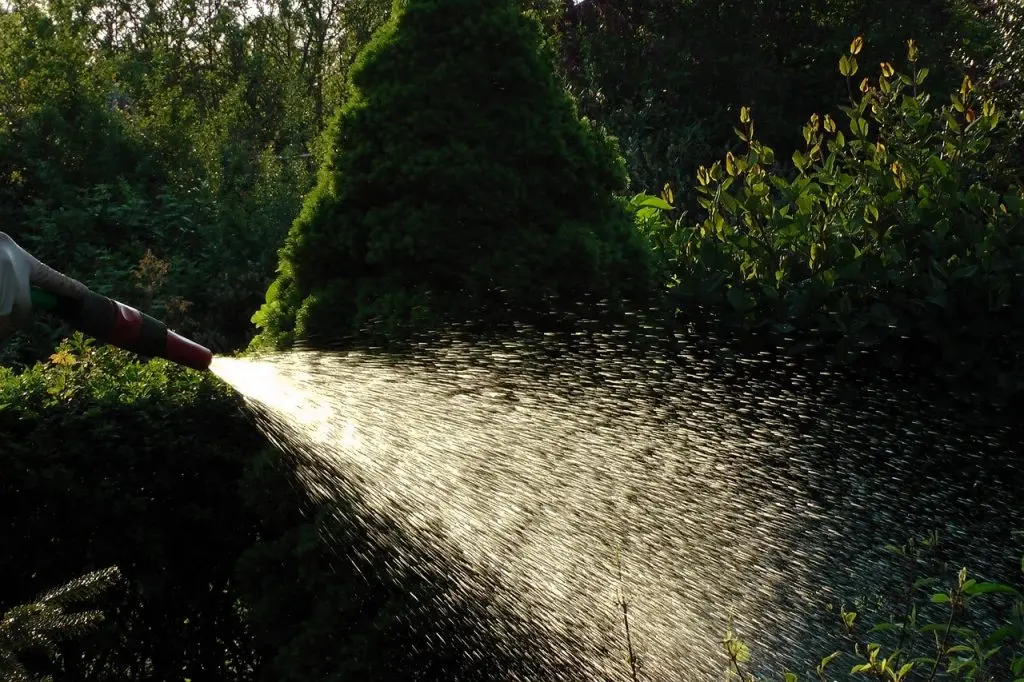
When comparing 5/8 vs 3/4 hose, we must look at how the two diameters affect water flow and pressure. Smaller 5/8 inch hoses provide a narrow water stream that is limited in both length and diameter. The reason you would use a 5/8 inch hose to irrigate your yard is because it prevents the stream from rushing out in huge torrents which might flood large sections of ground and form puddles.
Larger 3/4 inch hoses offer an increased volume of water per minute through the tubes because of its wider flow pattern.
Weight and Maneuverability
When choosing between a 5/8 vs 3/4 garden hose, weight and maneuverability are key considerations. A 3/4 inch is a lot more heavy than a 5/8 inch hose. They usually weight between 12 and 15 pounds for a 50 foot hose. Lugging back these garden hoses when watering big gardens, patios washing cars, is to say the truth, really tiring and dull.
A 5/8-inch hose weighs from 7 to 10 pounds, depending on its length. Heavier and bulkier to carry, this size is best left at home on a reel. They are ideal for outdoor jobs such as landscaping or cleaning. A smaller 1/2-inch hose is light and easy to handle. This size is suitable for watering small lawns or gardens and dragging around backyards.
Durability and Longevity
When comparing the durability and longevity of 5/8 hose vs 3/4 hose, 3/4-inch hoses tend to be stronger due to their thicker walls and construction. This makes them more resistant to kinks, abrasions, and punctures. They are suitable for handling higher water pressures and intensive tasks. Consequently, they often have a longer lifespan and require fewer replacements.
On the other hand, 5/8-inch hoses, while still durable, are made with slightly thinner walls and may be more prone to kinks and damage under high-pressure conditions. They are ideal for regular household use but may not withstand the same level of wear and tear as the larger hoses.
Benefits of Using a 3/4 Hose
We encounter garden hoses in many aspects of daily life. It is employed in watering gardens, cleaning homes, and other tasks. 3/4-inch garden hoses offer UV resistance that can withstand extreme temperatures. A 3/4-inch hose offers superior water flow for faster watering and better pressure. It is ideal for large gardens and high-demand scenarios.
Its durability reduces kinking and ensures longevity, which makes it suitable for rough terrain. These hoses are favored in professional landscaping for efficiency and compatibility with garden tools.
High-Pressure Watering

Since a 3/4-inch hose has a wider diameter and higher water flow, it is the greatest choice for maintaining a large lawn because it can cover a larger area. Additionally, its high water pressure allows you to perform heavy-duty and commercial tasks.
When we look at what is bigger 5 8 or 3 4 diameter, we understand that the answer is ¾ diameter. But which one is more durable? The ¾-inch garden hose offers superior durability for rough handling and extensive use. It is made up of stronger materials, so you can expect it to last for a long time without a lot of wear and tear.
Heavy-Duty Durability
Benefits of Using a 5/8 Hose
While the ¾-inch garden hose offers several benefits for commercial tasks, the ⅝-inch hose is perfect for residential applications. Let’s see how the ⅝ hose stands out in the 3 4 vs 5 8 garden hose competition.
Lightweight and Flexible
The 5/8-inch hose is lighter and easier to handle than larger hoses. Therefore, it can reduce fatigue during prolonged use. Additionally, the 5/8 inch diameter ensures adequate water flow for most residential gardening tasks, including watering plants, washing vehicles, and cleaning patios.
Ideal for Small to Medium Gardens
When comparing the garden hose 3/4 vs 5/8, the 5/8 is particularly effective in smaller to medium-sized gardens where flexibility and ease of handling are essential. Overall, the 5/8 inch hose combines efficiency with practicality. It is a popular choice for everyday gardening and light-duty watering applications.
Choosing the Right Hose for Your Garden
Not every garden hose is made similarly. There are a variety of colors, sizes, and styles available. Certain hoses have specific purposes and are composed of different materials. There are even hoses with water flow control. Your choice of hose will be determined by the kind of work you intend to undertake this summer.
Garden Size and Watering Needs
When you’re looking at 5/8 or 3/4 garden hose options, you need to consider your garden’s size and watering needs to get the perfect one. If you have a large garden, you need longer hoses with higher water flow capacities. So, you’ll need the ¾-inch diameter hose. This will provide you with ample reach and water pressure for extended distances.
Alternatively, if your garden is small or medium-sized, you will benefit from light and maneuverable hoses like the 5/8 inch diameter. It offers easier handling and sufficient water flow for common residential gardening tasks.
Type of Plants and Watering Frequency
When you are considering 5/8 or 3/4 garden hose options, you must also consider the type of plants in your garden and their watering frequency. Vegetable gardens often require consistent water.
So, you’ll want to use spray nozzles or drip irrigation systems to control water delivery and minimize waste. Now, if you have flower beds, you’ll require gentler watering methods like soaker hoses or precise nozzle settings to protect delicate blooms.
Lawns, needing frequent watering, benefit from hoses with broad coverage and adequate flow rates (5/8 inch or larger). These hoses can facilitate better and even distribution of water across grassy areas. If you can tailor your hose choice to your specific plant needs, it helps optimize water usage and promotes healthier garden growth.
Why VEVOR Garden Hose Reel is the Perfect Companion
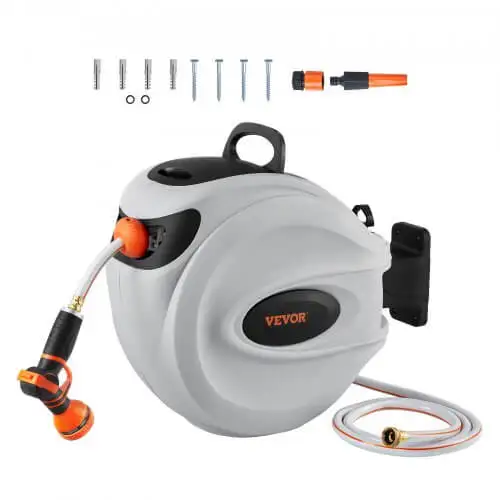
The VEVOR Garden Hose Reel will eliminate all the trouble that may arise from inconvenient garden hose storage. It offers your family an organized and efficient way of storing garden hoses and makes usage hassle-free. Its coil design keeps the hose clean and dry when stored, thereby extending its service life, and safeguarding you and your family from possible tripping accidents in the garden.
A hose reel such as the model by VEVOR makes storing your hose easy: the hose is conveniently looped at any point and stays tangle-free in the reel as well as being protected from UV degradation, preserving a longer life for a gardener’s pride and joy. Pulling it out and reeling it in is made easy.
Key features of VEVOR Reel include:
- High-quality material
- Heavy duty hose length with 5/8” hose diameter
- 180-degree swivel mount for flexible movement
- Smooth rewind operation by automatic rewinding
This hose reel add-on allows for maximum use of garden hose while keeping a sturdy mounting system to prevent kinks when the hose is on. The integrated hose allows for optimal redistribution while giving a clean retract and at the same time it avoids any twists to the hose itself.
Conclusion
If your home has a large yard, you are undoubtedly aware of how difficult it is to manage it. For a garden to remain lush and green throughout the year, everyday maintenance and care are necessary. And you need an ideal garden hose for that. Now that you have compared 5/8 hose vs 3/4 hose, you can decide for yourself which one is the best for your needs. You can consider VEVOR Garden Hose Reel for optimal garden hose management.

